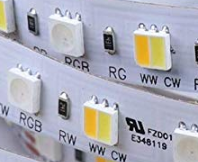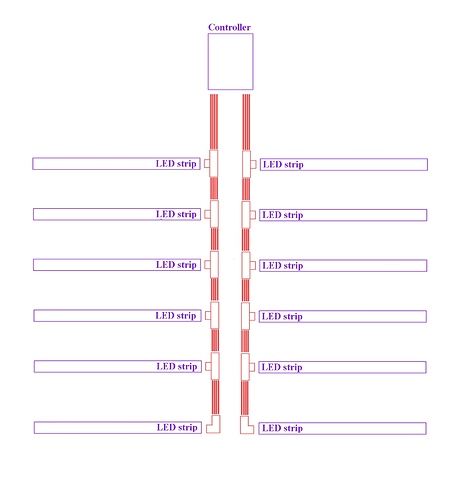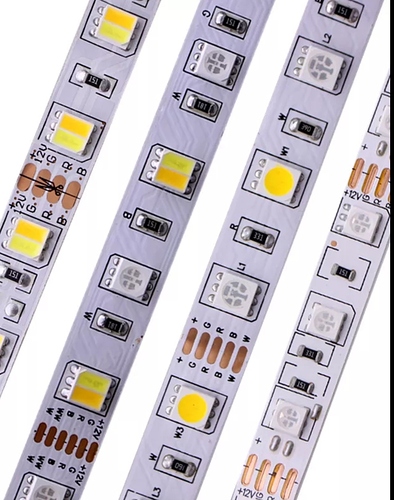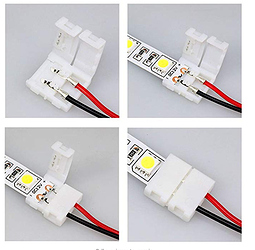You can buy push-on connectors for the strips.
They come in different number of conductors (2, 3, 4, 5). But in my experience they don't really work all that well. I found it much easier to just solder directly to the strips. However, you have to be careful. The metal contact pads on the strips are not weight bearing. If there is any pressure against them, they will pull off the strip and then that pixel has to be cut off because you now have nothing to solder to. So, after soldering directly to the strip, some hot glue is a good idea.
Also, if they are going to be exposed at all, some heat shrink tubing around the solder point will clean it up and make it look less DIY.
If you are looking to smooth out the light and they are going to be exposed (seen directly) some channels with covers to diffuse the light are a good idea. You can get them in straight:
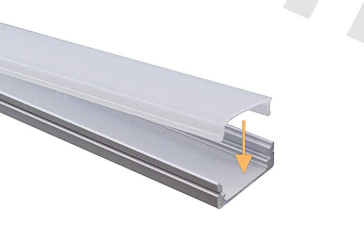
or 45 degrees:

But if they're going to be mounted where you can't see them, make sure there is enough gap between them and a wall or ceiling or floor for the light from each pixel to meet up so they don't look like a string of christmas lights. For example, if you have 30 leds/m they're going to be 33mm apart. so, if they are only 5" from the ceiling, you are going to see differentiation between the LEDs. But if they were a foot or more from the ceiling the light from one will meld into the light from the next.
Also, consider how many pixel/m you will need. If you are doing biased/up-lighting, 30 leds/m will probably be enough. If you're talking primary lighting, you'll probably want more like 60.
I agree, I would always go with integerated pixels instead of the separate ones. The light is much more uniform and looks a lot better. However, the ones that have the two color whites separate from the RGB can produce all of the colors on the CT scale by themselves. So, to get white, you only need them and not the RGB pixel. So, it depends on how you are going to control them and what the controller will use to get you the colors you want. But to play it say, just use the integrated chips.
Obviously I've done a lot of research into these. So, don't hesitate to ask questions. I did a few LED projects around the house and learned more than I ever wanted to know about the damn things. Might as well put all this useless knowledge to some good,right? 


